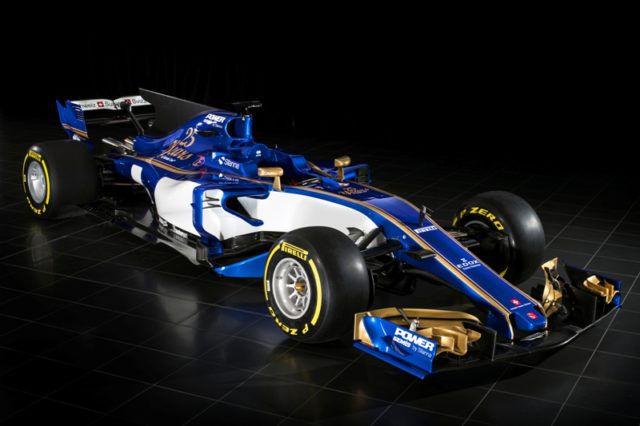Sauber launched its new 2017 Formula 1 challenger – Sauber C36-Ferrari.
In 2017 the Sauber F1 Team celebrates another milestone: it is the 25th Formula One season in the teams’ history. Together with its new owner, Longbow Finance S. A., the Sauber F1 Team starts a new era. The official rollout of the new Sauber C36-Ferrari will take place on the occasion of the first winter tests at the Circuit de Catalunya near Barcelona from 27 February to 2 March.
The most conspicuous changes that define the Sauber C36-Ferrari due to the new regulations are:
- The cars are becoming wider again, from 1.80 to 2 metres.
- The tyres are 25 % wider.
- The front and rear wings are becoming wider as well.
- The diffuser is larger.
In total, this means more downforce, more grip and, as a result, faster lap times.
Work on the concept of the new car focused on reducing the drag coefficient to a minimum. Another aim was achieving a significant weight reduction, despite the minimum weight having been raised to 728 kg. In certain areas of lightweight design the team went to the limits. The aero concept includes the optimisation of the front and rear wings and the underfloor. The radiator, the sidepods and the bodywork are as slim as possible.
There is clear progress in terms of additional downforce. The key here is to keep downforce and remain stable in various track sections. Technical Director Jörg Zander explains the changes in the development procedure in more precise terms:
“We put greater emphasis on aerodynamic stability as opposed to maximising downforce.”
The creation of Sauber C36-Ferrari started from scratch. Not a single part from its C35 predecessor can fit the new car.
In 2017, Sauber will use initially the Ferrari engine configuration from Abu Dhabi 2016. One of the changes this season is that only four of the six units of a powertrain can be changed without penalty. In the next few years the number will be further reduced. Thus manufacturers will put greater emphasis on the durability than on the top speed of their units.
Jörg Zander regards the 2016-spec engine as “a tried and tested system with higher durability to begin with.”
The opportunity to start early and define the engine environment was an advantage, Zander added. “The team was familiar with the engine and the transmission as well as the cooling requirements the engine entailed.”
Marcus Ericsson and Pascal Wehrlein are the Sauber drivers for the 2017 season
Chassis |
carbon-fibre monocoque |
| Front suspension | upper and lower wishbones, inboard spring and damper elements (Sachs Race Engineering) actuated by push-rods |
| Rear suspension | upper and lower wishbones, inboard spring and damper elements (Sachs Race Engineering) actuated by pull-rods |
| Brakes | brake callipers (Brembo), carbon-fibre pads (Brembo) and discs (Carbon Industries) |
| Transmission | Ferrari 8-speed quick-shift carbon gearbox, longitudinally mounted, carbon-fibre clutch |
| Chassis electronics | MES |
| ERS | Ferrari |
| Steering wheel | Sauber F1 Team |
| Tyres | Pirelli |
| Wheels | OZ |
Dimensions & Weight
| Length | 5,143 mm |
| Width | 2,000 mm |
| Height (without T Camera) | 950 mm |
| Track width, front | 1,615 mm |
| Track width, rear | 1,530 mm |
| Weight | 728kg (incl. driver, tank empty) |
Engine – Ferrari
| Configuration | V6 90° |
| Displacement | 1,600 cc |
| Bore | 80 mm |
| Stroke | 53 mm |
| Valves | 4 per cylinder |
| Maximum revs | 15,000 rpm |
| Turbo charging | single turbo |
| Maximum fuel flow | 100 kg/h |
| Maximum fuel capacity | 105 kg |
| Injection | 500 bar – direct |
| Units per driver | 4 |
ERS System
| Battery energy (per lap) | 4 MJ |
| MGU-K power | 120 kW |
| MGU-K maximum revs | 50,000 rpm |
| MGU-H maximum revs | 125,000 rpm |
































